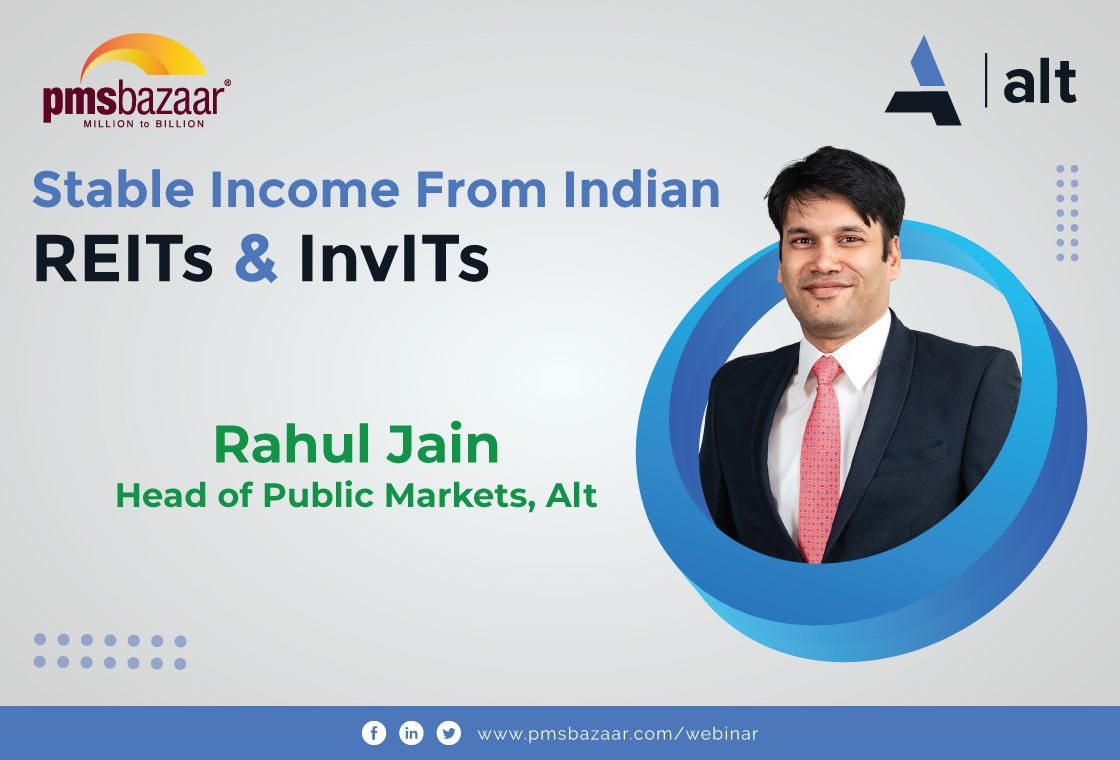India’s benchmark indices are near their lifetime highs. After a period of consolidation and notwithstanding the recent correction, markets continue to rally. Often, we are told to be cautious at higher market levels. Should you invest in a stock when it is beaten down or when it is at an all-time high? Most would go with the former strategy for making money, as they believe that is the best chance for making solid gains. But that isn’t how great wealth is created. It is in buying turnaround companies where the changes have just taken shape and the stocks are at all-time highs price-wise and profit-wise that great gains are made, according to Rohan Mehta, CEO & Fund Manager of Turtle Wealth Management.

In a webinar that we conducted recently, Mr. Rohan Mehta, CEO & Fund Manager of Turtle Wealth Management, highlighted the nuances of this strategy, the importance of deciding the exit strategy in stocks, and why not all turnarounds are opportunities. Mr. Mehta gives numerous examples to support his strategy and answered a few queries from viewers, towards the end.
Here are some of the key aspects covered in this webinar blog post -
- What characterizes a turnaround
- The idea of buying stocks at all-time high prices and profits
- Is versus If investing
- Why deciding the exit strategy on stocks is more important than the entry
- Not all stock corrections are buying opportunities: New-age firms and turnarounds.
What characterizes a turnaround:
A turnaround in a company after it has put all or most of the business negatives behind it. As such, the business itself is quite robust but goes through a long period of piecing together all the pieces. Mr. Mehta then indicated that the prices of such companies do nothing for long periods of even 10-15 years.
But these turnaround businesses see their profits grow manifold over this period and come back strongly on most performance and financial metrics. Their stock prices, Mr. Mehta says do nothing over such periods, even as the fundamentals keep improving.
But once the turnaround is complete, the stocks and profits just soar, often becoming multi-baggers within a few years. There may be a gestation period of a year or so at times before the stock takes wings. He added that 80% of a stock’s return is made in 20% of the time and remaining invested in that period is critical.
Mr. Mehta cited the examples of a leading automobile company, India’s largest bank, a premier logistics player, and many others to emphasize the point that the stocks of these companies did nothing from 2008 to about 2020-21 and were in consolidation mode. All this while, their profits grew four or five-fold.
The idea of buying stocks at all-time high prices and profits:
After a business turnaround takes wings or is just on the verge of doing so, there are humongous stock gains to be made from investment in such a company. As mentioned earlier, after a period of 10-plus years, there is a major break-out and the stock gives great returns in just 3-4 years.
Mr. Mehta pointed out that the idea must be to buy a turnaround stock at or near its all-time high. But the caveat here is that the company must also be recording all-time high profits and profitability. That makes the stock upswing sustainable.
He clarified that even at its highs, he said a stock’s value must be much higher than the price so that it actually makes its way into the portfolio. This process, however, should not be confused with value investing, which involves buying stocks that have good potential at low valuations.
What Mr. Mehta emphasized was that valuation was not the single most important criteria while investing in turnaround companies. He believes in pyramiding profits. Or, in other words, keep buying these stocks even at higher valuations as long as they keep making more business profits.
The value should be 3x to 5x the price from a 3–4-year perspective. He went on to cite the examples of Asian Paints, Pidilite, and HDFC Bank which are all great stories, but their value now may not be much greater than their prices as these are now very well-discovered.
‘Is’ versus ‘If’ investing:
While investing in turnaround companies, it is important to identify cases where the turnaround has taken form hold and is driving profits at present. Therefore, this is not about making investments in a potential turnaround candidate where the reversal in fortunes is expected to happen a few years down the line.
In other words, Mr. Mehta said it is about investing in ‘what is’ and not in anticipation of ‘what if’. He cited the examples of Mahindra & Mahindra and Tata Motors. While M&M’s turnaround was complete in 2021 and its stock price rose massively, Tata Motors stock has moved purely in anticipation of a turnaround sometime in the future.
Deciding the stock exit is more important than the entry:
While timing the entry is important, Mr. Mehta said deciding the exit price or the exit strategy is critical for wealth creation. He said the price, business issues and non-performance are deciding factors in exiting stocks, even if it meant doing so with losses. He indicated that returns should always be multi-fold, while the losses should be in low single-digit percentages. Selling right helps avoid impulsive exits and portfolio accidents.
Giving the example of Laurus Labs, Me Mehta said that the stock was bought at a low price, and it rose manifold after a turnaround. But the moment issues started cropping up, the PMS sold the stock at the first signs of trouble. Now the stock is down much more after the exit.
Not all stock corrections are buying opportunities: New-age firms and turnarounds:
Elaborating on his firm’s stance with respect to investing in beaten-down new-age firms in the context of turnarounds, he said that such companies may not find a place in the portfolio due to the rigorous entry process followed. Even if such new-age firms start reporting small profits, they cannot be termed turnaround. Taking the example of a niche e-commerce firm that listed many months back and is now down steeply (also reported tiny profits, unlike most others that had losses), he said the company traded at an exorbitant PE of 900 times, thus negating any chance of investing.
Mr. Mehta then answered a few questions from participants, two of which may make for interesting mentions here -
On being asked about gold as an investment opportunity in light of the current geopolitical tensions and high inflation, he said the yellow metal’s long-term returns were just 7-8%, thus not making a strong case for investments, especially when better avenues were available. In a lighter vein, he added that Titan may be a better investment than gold.
Join the 45000+ Investors and experts accessing our data & reports on PMS & AIF by subscribing to us. With this subscription, you can also access our insightful newsletters webinars, summits, and much more. Subscribe NOW
Recent Blogs

Long-Only AIFs Rebound Sharply in October; Long-Short Strategies Lag Despite Lower Volatility
106 long-only AIFs averaged 3.68% vs 32 long-short AIFs at 2.7%; only 24–31% of funds beat key indices

Markets log strongest monthly gains in 7 months; PMS performance turns near-uniform in October
Nifty 50 TRI gained 4.62%, BSE 500 TRI rose 4.27%; 415 of 427 equity PMSes ended positive

How SMEs are Shaping India’s Investment Landscape?
PMS Bazaar recently organized a webinar titled “How SMEs are Shaping India’s Investment Landscape?” which featured Mr. Shrikant Goyal, Fund Manager, GetFive Opportunity Fund.

Stable Income from Indian REITs and InvITs
PMS Bazaar recently organized a webinar titled “Stable Income from Indian REITs and InvITs,” which featured Mr. Rahul Jain, Head of Public Markets, Alt.

5 Key Considerations Before Investing in AIFs in India
Alternative Investment Funds (AIFs) have emerged as a compelling option for sophisticated investors seeking diversification and potentially superior returns. But venturing into AIFs requires a clear understanding of their unique characteristics that go beyond simply knowing what they are and their categories.

How AIF can help in diversification?
Traditionally, Indian investors have relied on a mix of stocks and bonds to build their wealth. While this approach offers diversification, it can still leave your portfolio vulnerable to market fluctuations. Enter Alternative Investment Funds (AIFs), a dynamic asset class gaining traction for its ability to unlock diversification beyond the realm of conventional options.

Long-Short AIFs Outperform Again Even as Markets Rebound in September
104 long-only funds shows an average monthly gain of just 0.37 per cent, while long-short AIF category averaged 0.94 per cent

Resilience returns as markets rebound in September; Multi-asset PMSes lead pack
Over 63% of equity PMSes ended September in green; nearly two-thirds outperformed key benchmarks.

